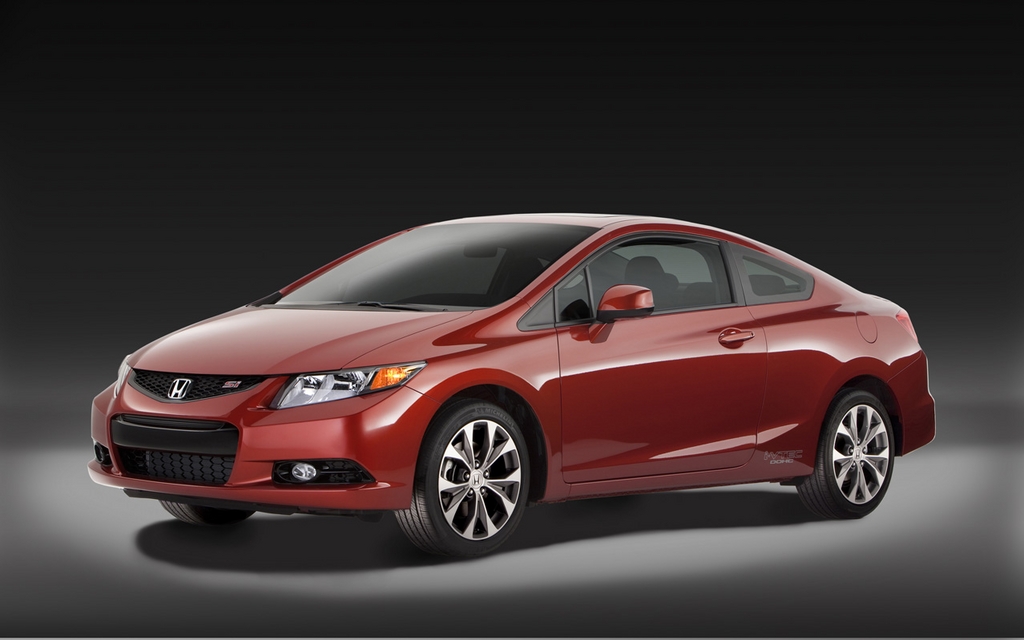2012 Honda Civic Si: Friendlier and faster for better or worse?

| Strong points |
|
|---|---|
| Weak points |
|
In 1963, Honda Motor Company decided to finally make the jump from motorcycles to automobiles. Already having championed the cause of small, reliable, and ultimately fun motorcycles, the world's largest motorcycle manufacturer leapt into the car market with their diminutive and friendly S500 sports car. With independent suspension at all four corners, a curb weight of just 1,598 pounds, and a unique chain-driven rear end, the Honda's real party piece was the tiny little 531 cc engine. Producing a respectable 44 horsepower, the little four cylinder leveraged Honda's motorcycling experience against their new automotive endeavour to create a car engine that would spin up to an astonishing 9,500 rpm. Almost four decades later, Honda is still in the business of producing some the fastest engines on the market.
And that really is what's at the heart of any discussion surrounding Honda's long-lived Civic Si. Whilst Honda Civic Si faithful have long defended the most underpowered car in the segment against its largely turbocharged competitors by claiming the engine's personality outweighed its measly torque output, the reality is that facts and figures help sell cars, not airy fairy epithets... and Honda knows this better than most. So, to help usher the ninth generation Civic Si into a hopefully more successful era, Honda's retooled their familiar Civic Si architecture with pretty substantial nods towards civility, maturity, driveability and improved performance.
Now, before journeying further down the rabbit hole, perhaps I should mention a particularly poignant little fact here: I loathed the previous Honda Civic Si. Truly and absolutely. Underpowered, thrashy, loud, and to my eye, the Pug of the automotive world, I simply couldn't understand how the same company that had brought the world the utterly brilliant CB-series of motorcycle could have ever allowed such a travesty to erupt from their R&D division. And to compound matters, I couldn't quite figure out what warranted the car's downright ridiculous price tag: as tested, my 8th generation Civic Si cost almost exactly twice as much as a base model. For my money, I'd have found a pair of base model Civics, a chariot, and the necessary rigging to have been a vastly more impressive way to spend somewhere in the neighbourhood of $31 grand.
But, after a few days aboard the recently repowered car, I found the unmistakable sheen of rose coloured glasses slipping over my eyeballs. Borrowed from the Acura TSX, the Civic Si's new 2.4 litre K24 is a vastly more tractable engine throughout the tachometre's sweep, producing 201 horsepower and 170 foot pounds of torque. As usual, the peak figures tell the least interesting part of the story: although there are four more horsepower underhood, the redline comes 900 rpm sooner. Similarly, peak torque, a figure that's up a healthy 22% over the previous model, comes on full song at just 4400 rpm instead of the 6100 it used to require. Long story short, the new K24 doesn't rev like the old 2.0 litre and more importantly, it doesn't need to.
And that's a bit of shame. Wringing seven shades of excrement out of the old 2.0 litre four pot was a rewarding experience, and so long as you didn't look at the speedometre while you were doing it (a task made easier thanks to Honda's oft-maligned split-level dashboard display), you could easily come away impressed. Making all the right noises and screaming past piston speeds that would have lesser forgings blowing their way through the hood, it came on song absolutely beautifully. Get it past the i-Vtec engagement point, and it gave the unmistakable sense of an engine delivering maximum output upon the razor's edge; threading the proverbial needles between perfect tuning and what engineers would call "catastrophic failure." By comparison, the new 2.4 litre's docile nature imparts none of the same satisfaction. In fact, outfitted with variable valve timing on just the exhaust side, the best indication that you've surpassed the Vtec system's engagement point is the rather absurd series of i-Vtec indicator LEDs located on the dashboard.
Of course, with all that newfound torque sitting like low hanging fruit in the middle of the rev range, I didn't often find myself winding the engine out all that far to begin with. Instead, the car's quieter and more refined ride seemed to pair well with a smoother and more flowing pace that saw gearchanges occurring right around where Vtec first comes into play. Although feeling much more laid back, it's approach that certainly gave rise to increased speed over the ground, and I'd be making a grave mistake if I didn't mention that this new engine definitely makes the car feel exponentially quicker.
When the S500 was finally released, it never quite find the niche market it should have. Much like the previous CIvic Si, it too relied on a marketplace rife with engineers and enthusiasts that could appreciate the car for the mechanical marvel it was... a marketplace that simply didn't exist. So, it was replaced throughout the decades by a myriad of cars that undoubtedly overshadowed the S500's performance, but never quite recaptured the soul of that first Honda automobile. And so it is with this new Civic Si. I can't argue that it isn't a better car in every meaningful way. In fact, the revisions brought to bear on it's drivetrain, suspension, and overall structure directly address the complaints I had with the previous model. But, in removing the car's rough edges, Honda's also stolen some of the car's personality. And although I never thought I'd say it, I have to admit, I kind of miss it.









